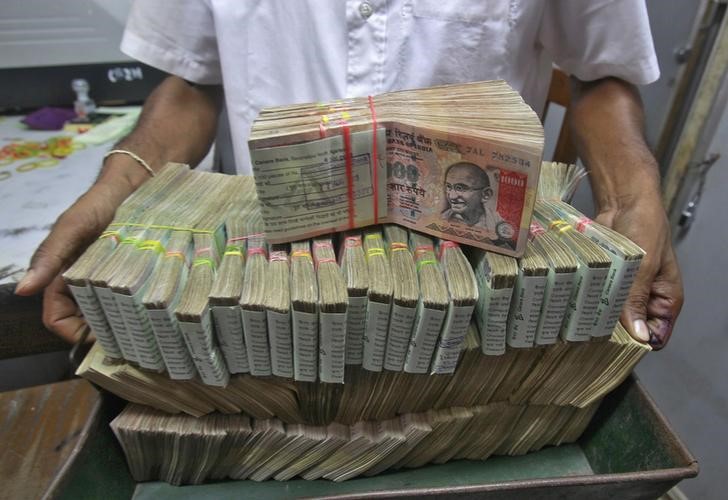U.S. stocks rise on Fed cut bets; earnings continue to flow
The Reserve Bank of India (NSE:BOI) (RBI) took significant action to support the Indian rupee and enhance liquidity within the banking system. The central bank announced a $10 billion 3-year buy/sell swap to be conducted on Friday, which is expected to inject approximately 870 billion rupees into the banking sector.
According to Reuters, this strategic move is in response to a persistent cash deficit troubling the banks, a situation that has necessitated the infusion of over 3.6 trillion rupees through various measures including open market and secondary market bond purchases, a six-month FX swap, and repos maturing in early April.
As a result of the RBI’s announcement, the 1-year dollar/rupee forward premium saw a significant drop, falling 12 basis points to 1.99%, marking its lowest point since early December. This decrease in forward premiums is crucial as it lowers the cost of hedging against future dollar payments for companies.
In the bond market, the benchmark 10-year bond yield remained largely unchanged, but yields on shorter-term four-year to five-year government bonds decreased by 2 basis points. Traders are now anticipating further declines in yields, which would benefit corporates and non-banking financial companies that typically rely on borrowing through such papers.
The 1-year overnight index swap (OIS) rate also fell, reaching a near 30-month low. Market participants are interpreting these developments as positive signs for liquidity conditions, although some experts believe that the RBI may need to continue its supportive actions.
Alok Singh, group head of treasury at CSB Bank, commented on the situation, stating that the RBI may have to conduct open market purchases of around 1 trillion rupees to maintain neutral liquidity levels as the financial year ends.
Additionally, Citi’s chief India economist Samiran Chakraborty suggested that a liquidity deficit of 300-500 billion rupees could persist, indicating a potential need for further RBI liquidity support in March ranging from 500 billion to 1 trillion rupees.
The RBI’s proactive measures come at a crucial time for the Indian economy and are aimed at ensuring stability in the financial markets as the fiscal year draws to a close. The central bank’s actions are closely watched by market participants and have immediate implications for the cost of borrowing and the strength of the national currency.
This article was generated with the support of AI and reviewed by an editor. For more information see our T&C.
